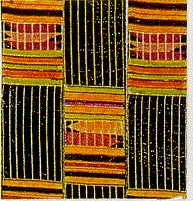| Let's keep in mind that often the matter of "secrecy" in the cases
here proposed involves at least as much another matter, and two rather
different analyses. The first is indeed that some people know X and others
don't. Steve has cautioned us about how often those who know are only a
subset of those of who don't know (more specifically these are members of
the select group who know they don't know, e.g. lower levels in a 'secret
society'). In this perspective, a "general community membership" is
engaged minimally if at all (they 'don't know they don't know' in at least
one specific sense). In this first matter, everyone tends to know at least
a bit about the societies/groups, whether or not knowing anything of their
'secrets.' There are, after all, other markers of membership in the
'secret society.' (cf. women in relation to men's societies and vice
versa). The second matter is that lots of people know X (even people of
[nearly] every class/status in the community), but some can acknowledge
THAT they know, directly or indirectly, and others can not, except in the
form of sharing specifically 'unauthorized' secrets. Note that in the
second case the "secrets" have become the non-secrets known by the
unauthorized people, and knowing/not-knowing just isn't the crucial
difference. Status, i.e. membership in distinguishable groups, is. Now
back to THE THREAD: the relevance here is, I believe, a matter of keeping
in mind that both hidden and secret elements may strongly involve 1) the
differences between, say, weavers and non-weavers, or gender A (who weave)
and gender B (who don't weave), and 2) the capacity to recognize the
(hidden or secret) mark of difference, and the dependence/independence of
this capacity on being able to bring specific meaning[s] to it.
AFN |
 In this example, you are looking at
part of three strips sewn together. The white stripes on black ground warp
faced pattern is known as the "lion catcher". It was designed by a 19th
century king in honor of the fact that his military officers successfully
met his challenge to their courage by trapping a big cat without weapons.
The patterns of horizontal stripes are symbolic motifs, and so are the
motifs they enclose. I believe the one that appears twice is "paddles",
symbolizing the notion that the boat only moves forward when the paddles
work cooperatively. I may be mistaken in the specifics here, but the
principle applies - some people understand the secret of the motif, others
only know that there is a secret known to the seniors. I wonder if
anything similar exists in western and central Asian cultures, and if so,
whether it is incorporated into their textiles. Steve
Price
In this example, you are looking at
part of three strips sewn together. The white stripes on black ground warp
faced pattern is known as the "lion catcher". It was designed by a 19th
century king in honor of the fact that his military officers successfully
met his challenge to their courage by trapping a big cat without weapons.
The patterns of horizontal stripes are symbolic motifs, and so are the
motifs they enclose. I believe the one that appears twice is "paddles",
symbolizing the notion that the boat only moves forward when the paddles
work cooperatively. I may be mistaken in the specifics here, but the
principle applies - some people understand the secret of the motif, others
only know that there is a secret known to the seniors. I wonder if
anything similar exists in western and central Asian cultures, and if so,
whether it is incorporated into their textiles. Steve
Price